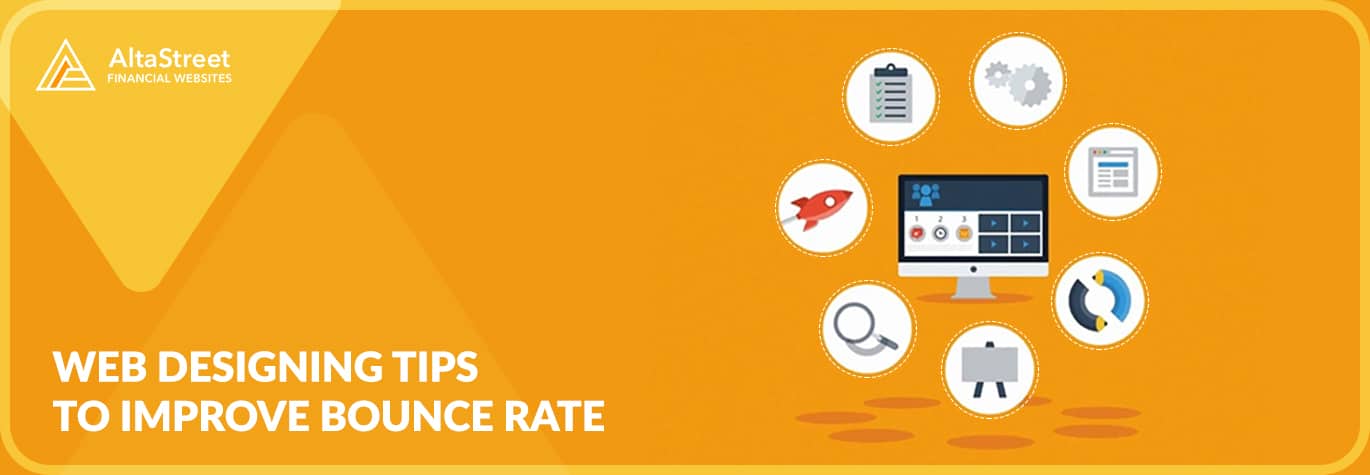
Using Web Design to Lower Bounce Rates
Is your website not delivering the results you’re looking for despite all the optimization you’ve done to it?
You might have to go back to square one and take a look at one of the pillars of your site—its overall design.
If you want people to spend time on your site, it should look appealing, be easy to navigate, and provide the information they’re looking for.
Your target audience needs to see your website as a reliable source of information. But if the site doesn’t look very useful, your site visitors are more likely to click off and not bother finding it from your site—no matter what amazing content it provides.
Your website is an extension of your business. It’s your own space on the Internet. It should be just as inviting and professional looking as your actual place of business or office. A properly designed website should give your business more credibility and should be at least on par with what your target clientele expects.
Let’s take a look at a couple of fundamental web design tips that will help keep users glued to your site and coming back for more.
Consider the Colors
Having your own website means you have all the freedom to make it entirely your own. It’s all up to you and your team to ensure that all the client-facing aspects of your site represent your brand accurately.
If you already have a well-established color theme for your brand, don’t be afraid to mix it up by adding more pleasing hues to your website’s graphic design.
Don’t forget the colors of the fonts and text on your site. Make sure it’s easy to read so that people can easily see what to click on next by just quickly glancing at different parts of the page.
Great Graphics and Images
You should take advantage of the web’s fantastic ability to present different visual design elements, text, and information. People are more likely to check out other parts of your website if your page elements look interesting.
Don’t just focus your graphic design on your logo and corporate identity. A bland looking website won’t leave a good impression on your audience. Allocate some of your resources on designing a unique and coherent look for your entire site, so that your website doesn’t just look like everybody else’s.
Use a combination of multimedia to help point people in the right direction. You can add infographics to different sections of your site so that you can present important information quickly to your users. You can also easily incorporate videos and audio to make your site more engaging.
It’s also a good idea to spend some money on high quality images that match perfectly with the message you are trying to send. You can use premium stock photos or hire a photographer who can capture the right look for your brand.
Using your own photos gives you the ability to customize your brand’s messaging so that it will resonate with your target market— whether it’s millennials or CEOs.
Remove the Clutter
Keep in mind that while having fancy graphics and multimedia content is good, you shouldn’t fall into the trap of cluttering up your website with too many confusing design elements.
Don’t be afraid of keeping empty white spaces on your pages. Leaving some parts of your site empty allows you to highlight important content and information. This also makes your visitors more likely to click on other sections of your site to find out more.
Your website should be able to present content and information to your visitors in a continuous flow and in a logical manner. Notice how search engines don’t dump all the search results in one page? People would suffer from information overload if the information wasn’t separated into pages.
Optimize for All Devices
Making your website look good on both computers and mobile devices is what web designers call responsive design.
With so many ways available to connect to the Internet, you don’t want to leave out a segment of your target market from consuming the content you are trying to present. Always consider how your site’s layout and its design elements look on different screen sizes and resolutions.
It may seem like a lot of extra work, but responsive design is a real concern that you have to regularly address to make sure your site can cater to everybody no matter what they’re using.
Give Visitors Different Ways to Engage With Your Site
If you give people something to do on your website there’s a good chance they’ll stay longer.
There are many things you can do to make your website more dynamic and engaging. Depending on what type of service you offer, you can start with the basics like opt-in or contact forms, an FAQ page, a news section, or a blog.
You can also add buttons and options so that users can easily share your page and your content on social media like Facebook or Twitter.
If visitors find something worth sharing or interacting with on your site even once, there’s a better chance that they’ll come back for more updates.
Final Words
Even if you already have a decent performing website, it’s a good idea to check it every now and then to see if there’s still room for improvement. There could be new things you can try to give your site metrics a small boost. You may be able to use some of the things we mentioned today that you can easily apply to your situation.